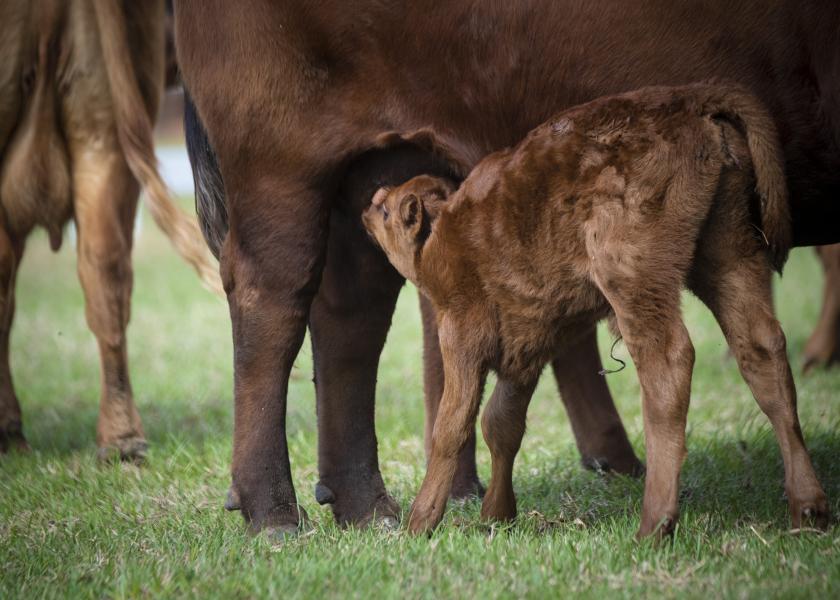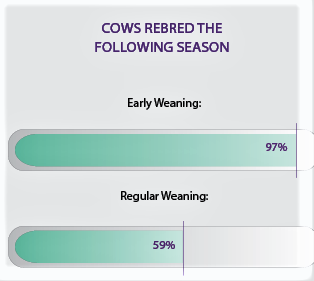Early Weaning Can Work

Months of extremely dry weather throughout the Great Plains have many cow/calf producers there, and in some other areas as well, facing a low forage inventory this spring.
If that scenario describes what your producers are facing – especially as spring turns to summer – they may want to consider early weaning of their spring-born calves, says Paul Beck, Oklahoma State University (OSU) Extension beef cattle nutrition specialist.
He notes it’s much harder to maintain or add condition on a cow that still has a calf on her side. “A dry pregnant cow in the second trimester requires 37% less TDN and 13% less protein than when she is in late lactation with a calf. The dry pregnant cow not only requires less energy and protein, she also would eat 20% less than the lactating cow,” Beck says in “Cow-Calf Corner,” which is published electronically.
While it’s not ideal, tough production conditions can warrant removing the calf from the cow as early as 45-days of age, says Glenn Selk, OSU Extension emeritus animal scientist.
Body Condition Scores Improve Reproductive Performance
Selk cites an OSU study that shows early weaning of spring-born calves from thin 2-year-old cows, with body condition scores of either a 3 or 4, had a positive impact on the reproductive performance of those young cows as they went through the next breeding season.
In the study, half of the calves were weaned early between 45 and 60 days. With the other half, the cows were allowed to raise their  calves to about 7 months of age. “In the early weaned group, 97% of the cows were rebred during the breeding season that followed as compared to only 59% of the 2-year-old cows that were still nursing calves throughout the breeding season,” Selk says.
calves to about 7 months of age. “In the early weaned group, 97% of the cows were rebred during the breeding season that followed as compared to only 59% of the 2-year-old cows that were still nursing calves throughout the breeding season,” Selk says.
OSU did a follow-up study on early weaning spring calves from 4-year-old cows. Selk says this group of cows was in a little better body condition than the 2-year-old group, with a body condition score of a 4 or 5. Of the 4-year-old cows allowed to nurse their calves through the summer into fall, 81% were rebred. In the group of cows with early weaned calves, 100% of those cows were rebred during breeding season.
What To Do With The Calves?
Early weaned, spring-born calves can be successful on a good growing ration, according to Beck.
“Early weaned calves can be grown in dry lot very efficiently with feed-to-gain expected to be 4.5 pounds to 5 pounds of feed per pound of gain,” he says.
“Because these calves are smaller and immature, they should be fed growing rations with targeted gains of 2 pounds to 2.5 pounds per day, depending on frame size and growth potential,” he adds. “This size of calf would be expected to eat about 3% of their bodyweight per day on a dry matter basis, but the lighter calves require 18% crude protein diets until they weigh over 400 pounds.”







